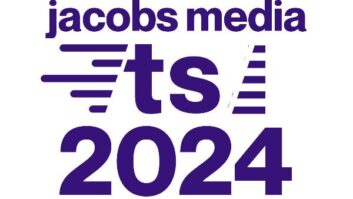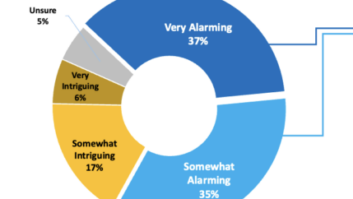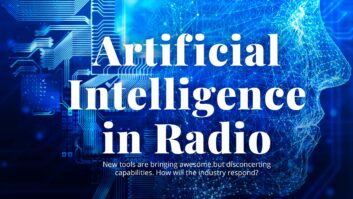It sounds like something vaguely kinky to be sure — a bunch of guys in their 50s and 60s wondering what’s happening in the bedrooms of people in their late teens and 20s.
But Jacobs Media founder Fred Jacobs assured a crowd at the NAB Radio Show in Charlotte that the intentions of “The Bedroom Project” were completely above-board: an attempt by his firm, with strong support from Arbitron, to learn much more, in detail, about how people aged 17–28 really relate to the many technology and media options at their disposal.
“Arbitron had the desire to dig deeper, to learn more about this demographic, which we all know are difficult to research,” Jacobs said.
But getting into the heads of his research subjects — 31 men and women from Columbus, Ohio and Los Angeles — required more than the usual focus-group studies.
Instead, Jacobs turned to a growing field called ethnographic research, in which researchers spend extended periods of time with their subjects, interacting with them in their homes or other intimate settings.
(click thumbnail)Fred Jacobs speaks about how young Americans use, consume and interact with technology and media. Photo ©NAB“Ethnographic research is done by the Procter and Gambles of the world. This is the first time we’ve seen this in radio,” said Steve Goldstein, executive vice president of Saga Communications, as he introduced Jacobs’ first presentation of the “Bedroom Project.”
“One of the keys to ethnography is making subjects comfortable,” Jacobs said. To accomplish that, Jacobs and Arbitron couldn’t use their usual — older — researchers. Instead, “The Bedroom Project” hired and trained a crew of interviewers in the same age group as their research subjects, sending them out to conduct two-hour videotaped interviews in the subjects’ homes and vehicles.
Immersed
In unveiling “The Bedroom Project,” Jacobs recalled another presentation he’d given at an NAB Radio Show six years earlier, a panel discussion called “Your 14-Year-Old Thinks Radio Sucks.”
“If you think about it, our Bedroom Project respondents now are those 14 year olds, six years later,” Jacobs said.
Before even asking them about radio itself, Jacobs drew broader conclusions about the ways in which his survey subjects relate to today’s high-tech world.
“They are immersed in media and technology,” he said. “They frequently multitask.”
Jacobs identified three factors that “Bedroomers,” as he dubbed them, seek out when choosing technology to adopt: control, variety and convenience, or “CVC.”
“Media that have those attributes have the most value,” he said.
For the Bedroomers, one device more than any other combines all three of those attributes — and it’s not the radio.
“The mobile phone, to the Bedroomers, is the Swiss Army Knife of gadgets,” said Jacobs. He says there’s a clear generational divide between the way the Bedroomers’ generation uses their phones and the way older cell phone owners use theirs.
“Many of them tell us that they text as much as, if not more than, they talk,” he said. “Texting on mobile phones may be usurping instant-messaging online.”
The old-fashioned landline phone, by contrast, is quite literally yesterday’s technology for many Bedroomers. Even older participants in the project, including a married couple in their later 20s, shunned the landline in favor of the ubiquitous mobile phone.
From a researcher’s perspective, Jacobs says that’s bad news, making it harder to track down people under 30 to take part in ratings and other surveys.
‘E-mail is for old people’
The news gets even worse — or at least more disorienting — for radio people who thought they were pretty hip just by virtue of e-mailing (perhaps even on a Blackberry) on a regular basis.
To the Bedroomers, Jacobs says, e-mail and Web browsing isn’t for recreation. It’s just the way they conduct whatever business they need to conduct.
“Many of them go online for more business or utilitarian functions,” such as paying bills or hunting for jobs, Jacobs said. As for the social function e-mail served a few years ago, it’s been usurped not only by text messaging but social networking sites such as Facebook.
That perception that, yes, “e-mail is for old people” reflects on Webcasting as well. Jacobs says few of the Bedroomers spent much time with streaming audio on the Web, a reflection of what he says is its lack of those critical “CVC” attributes.
Ironically, even as 20-year-old e-mail gets tagged with the “fogy” perception, a medium more than three times as old is finding new life.
“A really great example of old media fighting back is television,” Jacobs said.
Jacobs says TV retains its importance by serving as a social medium — not just as background for other activities, but as a destination.
“TV is groups,” he said. “They plan their activities around shows.”
The news for marketers is still mixed, though; the Bedroom Project research found that while TV shows hold Bedroomers’ attention, the ads they contain are still widely ignored, thanks to digital video recorders.
“If I want to watch something live, I’ll go away for 15 minutes and come back so I can skip the commercials,” said one of the Bedroom participants in one of the video clips that Jacobs screened as part of the presentation.
Now for the really bad news
With an audience of radio owners and programmers primed for the worst, Jacobs turned to the Bedroom Project’s findings on radio itself, beginning with satellite radio.
“They all know about it, a few have it, some aspire to become subscribers,” he said. “But the majority have yet to pull the trigger.”
As for good old terrestrial radio, “Often times we really had to probe to generate a discussion about radio,” Jacobs said of the Bedroom interviews.
Only when the chats moved from inside the participants’ homes out to their cars did the discussion perk up, and not always in the way radio insiders might have anticipated.
In an era of voice-tracking and jock-free “Jack FM” and its siblings, Jacobs said the topic that got Bedroomers talking was talk and personality.
“Making that connection with listeners was what really stirred passions among Bedroomers,” he said, with many citing favorite morning shows that they tuned in while commuting.
“Music is becoming a commodity, but personality value is real,” Jacobs said.
What was missing, conspicuously, was any use of radio at all outside the car. Audience members cringed visibly as Jacobs screened a series of responses in which Bedroomers were asked whether they had radios in their homes, with answers ranging from “a broken clock radio” to “my grandma has one in her room upstairs.”
“If you don’t have radios in certain locations,” Jacobs observed, radio essentially has ceased to compete in those venues.
But while identifying the problem is fairly easy, solving it is a bigger challenge, one Jacobs says radio needs to meet by broadening its horizons.
“Content distribution via mobile phones is imperative,” he said. “It is the device.”
Jacobs says radio stations should also be reaching out to listeners through texting, especially for active rock and CHR formats that target younger audiences.
The Bedroom Project collected more than 60 hours of video, which Jacobs says is still being edited and analyzed. Portions of the video are being made available through a new Jacobs/Arbitron Web site at www.thebedroomstudy.com, with additional segments to be made available in coming months.












